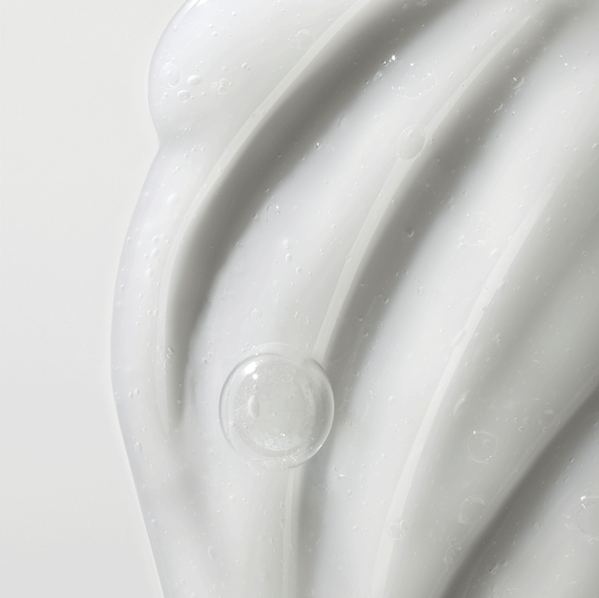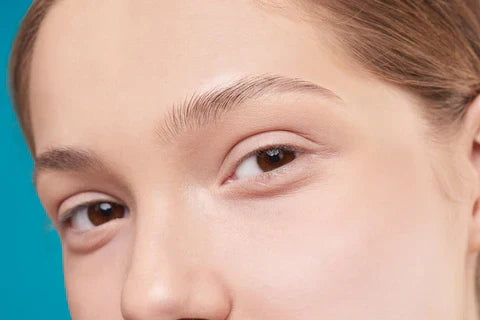In the realm of skincare, knowledge is power. Understanding your skin type is essential for selecting the right products and treatments, ensuring your skincare routine is both effective and tailored to your unique needs.
So, before considering which anti-aging cream to choose or which exfoliator might enhance your gleam and glow, the most crucial step is to pinpoint your skin type. This guide delves into the importance of identifying your skin type and offers expert advice on how to determine it, paving the way for a radiant and healthy complexion.

Why do I need to know my skin type?
Your skin is as unique as you are, and its needs can vary dramatically from person to person. Using too many products or ones that are not suited to your skin type can lead to a host of issues, from increased breakouts and dryness to irritation and uneven skin tone. By understanding your skin type, you can select products that enhance your skin’s natural beauty and address specific concerns, leading to a more balanced, glowing complexion.

Misunderstanding your skin type can have real, visible consequences. For example, using cleansers and exfoliators that are too harsh – even if they are recommended for excessive oiliness – can signal your skin to produce even more oil. Conversely, applying a moisturizer that is too thick or heavy can suppress natural oil production, resulting in even drier skin.
Taking the time to learn your skin’s specific needs will help you choose the right options that balance your complexion, resulting in healthier, more radiant skin.
What different types of skin are there?
Googling ‘what is my skin type’? Every person’s skin is different, but there are a few common skin types that may help you to identify where your skin fits in the most. The three main skin types are commonly referred to as oily, combination and dry, but we’ve identified sensitive, mature and prone-to-breakout types, too.

Oily skin
Oily skin is characterized by excess oil production, resulting in a shiny appearance, particularly in the T-zone (forehead, nose, and chin). You may struggle with enlarged pores, the occasional breakout, and blackheads.
This skin type benefits from oil-free and mattifying products that help control sebum production.
Wondering why your skin is so oily? Read our blog on Understanding And Managing Oily Skin.
Dry skin
Dry skin lacks the protective sebum that lubricates the skin’s surface and often feels tight and rough, with a dull complexion.
Pores are small, the skin is rough to touch and can be irritated easily. Common symptoms include flakiness, redness, and a tendency to crack or peel, especially in colder weather.
Hydrating and nourishing products rich in oils and moisture-binding ingredients are essential for maintaining a healthy barrier. Avoid drying foaming cleansers.
Combination skin
Combination skin features both oily and dry areas. Typically, the T-zone is oily while the cheeks remain dry or normal.
This skin type can be challenging to manage, requiring a balanced approach that addresses both hydration and oil control.
Sensitive skin
Sensitive skin is prone to redness, itching, and irritation. It often reacts negatively to certain ingredients or environmental factors, necessitating a careful selection of gentle, hypoallergenic products.
Avoid highly fragranced and active botanicals and use a soothing barrier cream.
Normal skin
Neither too oily nor too dry, this skin type typically has small pores and moderately thick skin with good elasticity and smoothness.
It’s generally balanced, with few blemishes and a healthy, radiant complexion.
Breakout skin
Breakout-prone skin is characterized by frequent blemishes, blackheads, and pimples, often due to excess oil production and clogged pores or hormonal imbalances.
This skin type can be sensitive and reactive, requiring gentle, non-comedogenic products to manage and prevent further breakouts. Consistent care and targeted treatments are essential to maintaining a clearer complexion.
Learn more by reading Banish Breakouts: Your Guide to Over the Counter Acne Treatments.
Mature skin
Mature skin exhibits signs of aging such as fine lines, wrinkles, and loss of elasticity. It often feels drier and thinner due to reduced oil production and collagen levels.
This skin type benefits from rich, hydrating products and ingredients that promote cell regeneration and firmness, helping to restore a youthful, radiant appearance.
What about skin conditions?
It’s not enough to just know your skin type. You need to know about skin conditions, too. These are changes to your normal skin type and may be caused by a number of factors, such as:
- Seasonal weather changes (more oily in hotter climes, drier in wintertime)
- Late nights and alcohol (dehydrating and dulling)
- Flying (recycled air on flights dries out skin)
- Holidays (change in climate, food and water can play havoc with your skin)
- Hormones (for example, your skin will produce more oil in the run-up to your period). Menopause can cause issues too: read more in Menopause and Your Skin: Changes, Skincare Tips).
For example, you may have oily skin (your skin type), but suffer from dehydration (a skin condition). As a result, you may label yourself a dry-skin type and hit the moisturizer. However, this could result in an unsightly break-out of spots.

How to know your skin type
Determining your skin type is easy! Here are three simple techniques for you to try.
1. The bare-faced method
Cleanse your face thoroughly with a mild cleanser and gently pat dry. Leave skin bare, so don’t apply any additional moisturizers, serums or treatments.
After 30 minutes, examine your skin in natural light.
See a noticeable shine on your nose and forehead? Your skin is most likely combination.
If there is shine on your cheeks in addition to your forehead and nose, plus larger, more visible pores, you have oily skin.
After another 30 minutes, evaluate whether your skin feels tight, especially if you smile or make any other facial expressions. If yes, and your pores are small and not very noticeable, your skin is dry.
Don’t forget texture. Smooth and even skin typically suggests a balanced normal skin type, while rough or bumpy skin can indicate dryness or sensitivity.
2. The touch test
After cleansing your face and waiting for an hour, gently touch different areas of your skin:
- If it feels greasy, you likely have oily skin.
- If it feels tight and dry, you have dry skin.
- A combination of oily and dry sensations indicates combination skin.
3. The blotting sheet method
This method is a great way to tell the difference between oily and dry skin types. Gently pat a blotting paper on the different areas of your face. Hold the sheet up to the light to determine how much oil is visible:
- Little to no oil? You have dry skin.
- Oil from the forehead and nose areas? Your skin is combination.
- Saturated with oil? You have oily skin.
Getting to know your skin is the key to unlocking its full potential. By thoroughly assessing its unique characteristics, you can tailor your skincare routine to meet its specific needs. This bespoke approach not only promotes a healthier, more balanced complexion but also paves the way for radiant, glowing skin.
For personalized advice and tailored recommendations, take our comprehensive skin type quiz and discover the perfect skincare regimen for your unique skin.




